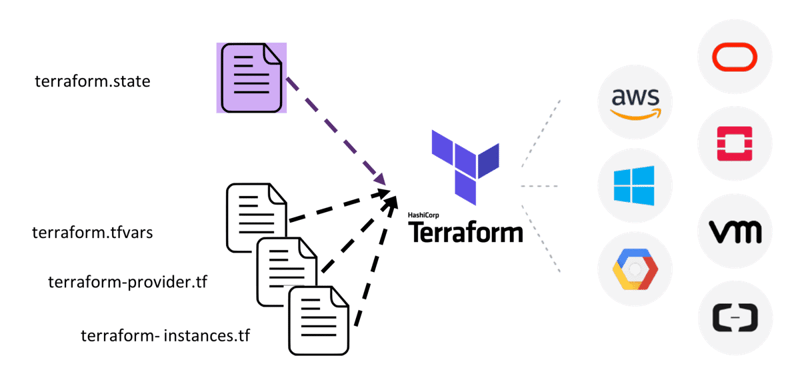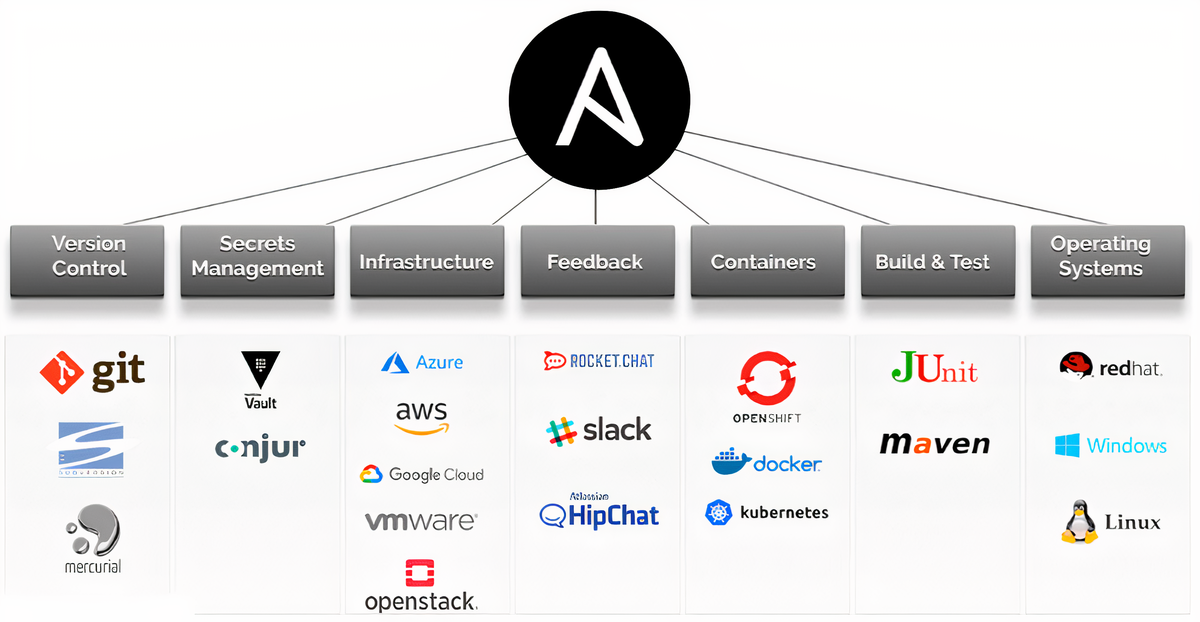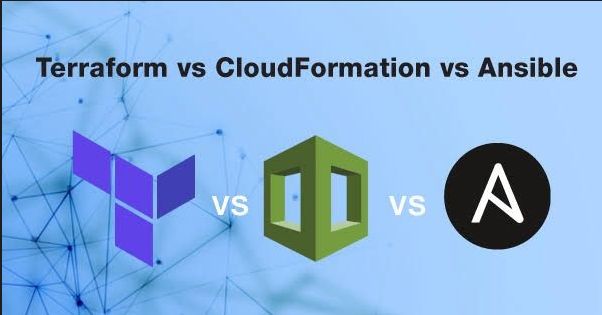Table of Contents
As cloud technology and DevOps practices continue to evolve, full stack developers are expected to manage not only application code but also the underlying infrastructure that supports their applications. This shift has led many to wonder: should full stack developers learn tools like AWS CloudFormation, Terraform, and Ansible? In this article, we’ll explore the role of infrastructure-as-code (IaC) in modern development, the benefits of these tools, and why learning them could be beneficial for full stack developers.
What are CloudFormation, Terraform, and Ansible?
Before diving into the “why,” let’s clarify what each of these tools does and how they fit into the modern development landscape:
- AWS CloudFormation
CloudFormation is Amazon Web Services’ native infrastructure-as-code tool that allows users to define and provision AWS resources using JSON or YAML templates. It’s specific to AWS and automates the creation and management of resources, making it easier to deploy infrastructure consistently and reliably.

- Terraform
Terraform, developed by HashiCorp, is an open-source infrastructure-as-code tool that supports multi-cloud environments, including AWS, Google Cloud, and Azure. It uses HCL (HashiCorp Configuration Language) and allows users to define infrastructure in a declarative manner, managing infrastructure across various cloud providers with a consistent syntax.

- Ansible
Ansible is a configuration management and automation tool that uses a simple YAML-based syntax called Playbooks. Unlike CloudFormation and Terraform, which focus on provisioning, Ansible excels at configuring and managing applications and operating systems, making it ideal for tasks like software installation, updates, and patching.

Why Should Full Stack Developers Consider Learning These Tools?
Here are some key reasons why learning these IaC and configuration management tools can benefit full stack developers:
1. Increasing Demand for DevOps Skills
As more companies adopt DevOps practices, there’s a growing demand for developers who can handle both development and infrastructure management. IaC tools like CloudFormation, Terraform, and Ansible are essential components of DevOps, as they allow for automated, repeatable infrastructure provisioning.
- Benefit: Learning these tools allows full stack developers to manage infrastructure alongside their code, making them more versatile and in line with DevOps practices.
- Example: A full stack developer who understands Terraform can create an entire cloud environment, deploy an application, and automate its scaling policies—something traditionally done by a separate DevOps engineer.
2. Enhanced Collaboration Between Development and Operations
Knowing IaC tools helps developers understand and collaborate better with operations teams. Traditionally, developers have focused solely on application code, while operations teams managed infrastructure. With IaC, developers can contribute to infrastructure setups, making it easier to collaborate and break down the silos between development and operations.
- Benefit: Full stack developers can contribute to creating and managing infrastructure alongside code, enabling a smoother DevOps workflow.
- Example: By creating and sharing CloudFormation templates, developers can ensure that their application infrastructure is consistent across development, testing, and production environments, reducing potential misconfigurations.
3. Simplifying Multi-Cloud and Hybrid Deployments
In many organizations, applications are deployed across multiple cloud providers or in hybrid cloud environments. Terraform’s multi-cloud compatibility makes it easier to manage resources across different platforms, enabling full stack developers to support cross-cloud applications without vendor lock-in.
- Benefit: Terraform’s flexibility makes full stack developers valuable assets for companies with complex, multi-cloud environments.
- Example: A developer can use Terraform to deploy resources on both AWS and Google Cloud, allowing for better load distribution or disaster recovery setups.
4. Improving Deployment Speed and Consistency
IaC tools allow developers to automate the provisioning of infrastructure, reducing deployment times and minimizing human error. This speed and consistency are crucial in agile environments where continuous integration and continuous deployment (CI/CD) are prioritized.
- Benefit: Full stack developers who can work with CloudFormation and Terraform can automate their deployments, ensuring consistency and saving time.
- Example: A developer can write a CloudFormation template for setting up a multi-tier application stack on AWS, deploy it in minutes, and reuse the template to create identical environments in the future.
5. Mastering Configuration Management for Applications and Environments
While CloudFormation and Terraform focus on infrastructure provisioning, Ansible excels in configuration management. With Ansible, developers can automate software installation, updates, and configuration changes across multiple servers.
- Benefit: Full stack developers familiar with Ansible can automate application setup and maintenance, which is especially useful in microservices and distributed systems.
- Example: A developer can use Ansible to configure databases, install application dependencies, and deploy updates across multiple instances, simplifying the management of large applications.
Practical Scenarios Where These Tools Benefit Full Stack Developers
Here are some practical scenarios where full stack developers can apply their knowledge of CloudFormation, Terraform, and Ansible to add value to their projects:
Scenario 1: Setting Up a Development Environment
In traditional setups, setting up a development environment could take hours or even days, as developers had to configure dependencies, databases, and application servers manually. With IaC, developers can automate the entire setup.
- Solution: By using CloudFormation or Terraform, a developer can define the environment setup in code. This code can be shared, allowing all team members to create identical environments on their local machines or the cloud.
Watch this video from IBM to understand the core elements between the two:
Scenario 2: Continuous Integration/Continuous Deployment (CI/CD) Pipelines
Automating infrastructure setup in CI/CD pipelines is crucial for efficient deployment. For example, a pipeline could spin up resources for testing and then tear them down once testing is complete.
- Solution: Full stack developers can use Terraform to provision infrastructure as part of a CI/CD pipeline, automating the deployment and teardown of environments. Ansible can further be used to configure applications in these environments.
Scenario 3: Managing Multi-Tier Applications
In a multi-tier application, different components like databases, web servers, and load balancers need to be deployed and connected properly. Manually configuring each component increases the risk of misconfiguration and makes scaling difficult.
- Solution: CloudFormation or Terraform can be used to create templates for multi-tier application stacks, ensuring all resources are properly configured and connected. Ansible can handle the application configurations, ensuring each component functions as expected.
Pros and Cons of Learning CloudFormation, Terraform, and Ansible
| Tool | Pros | Cons |
|---|---|---|
| CloudFormation | Deep integration with AWS, good for AWS-only environments, declarative templates | Limited to AWS, can be complex for multi-cloud strategies |
| Terraform | Multi-cloud support, infrastructure-agnostic, highly popular | Steeper learning curve, additional setup for providers |
| Ansible | Great for configuration management, agentless, ideal for software deployment | Less suited for infrastructure provisioning |
Is Learning CloudFormation, Terraform, and Ansible Worth It?
In short, yes. For full stack developers, understanding CloudFormation, Terraform, and Ansible opens up more opportunities and allows them to manage a larger scope of a project. These skills can enhance a developer’s versatility, making them more valuable as companies seek professionals capable of bridging the gap between development and operations. Here are some final considerations:
- Career Growth: Learning these tools is a significant advantage if you’re interested in moving toward DevOps or site reliability engineering (SRE) roles.
- Efficiency: Knowing IaC and configuration management tools will streamline your development and deployment processes, making your work more efficient and repeatable.
- Collaboration: Familiarity with these tools allows full stack developers to collaborate seamlessly with DevOps and operations teams, contributing to a more cohesive team structure and faster product delivery.
“The ability to write infrastructure-as-code is becoming an essential skill for modern developers. It not only empowers them to build applications faster but also fosters better collaboration between dev and ops teams.” — Kelsey Hightower, Google Cloud Developer Advocate
Conclusion
As the role of full stack developers continues to expand, learning tools like AWS CloudFormation, Terraform, and Ansible can significantly benefit those who want to stay competitive in the tech industry. With the increasing adoption of DevOps and cloud-native practices, the demand for developers who can manage both code and infrastructure has never been higher. By learning these tools, full stack developers can build scalable, resilient applications and become integral to both development and operations.
For more DevOps and cloud computing tips, follow Cerebrix on social media at @cerebrixorg.
Franck Kengne
Tech Visionary and Industry Storyteller
Read also
November 19, 2024
November 19, 2024
November 19, 2024

